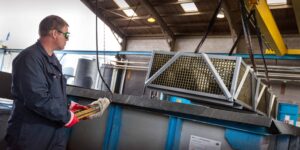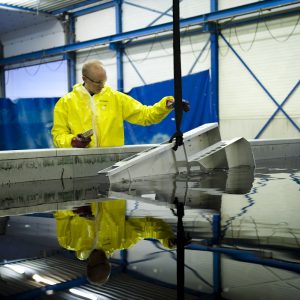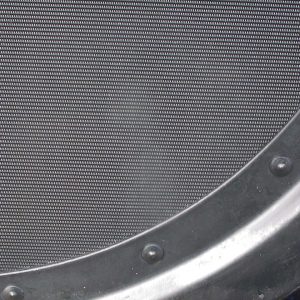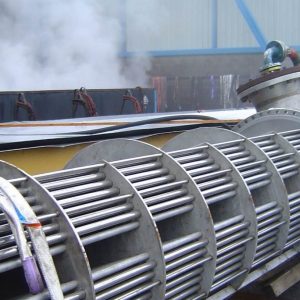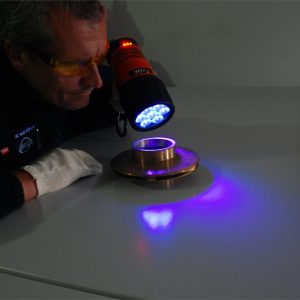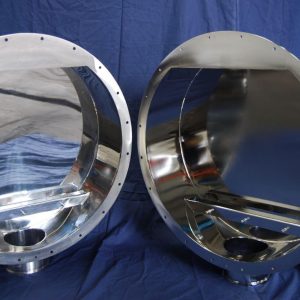The most important treatment against (corrosion) damage
As a result of heat input, for example during welding, a discoloration due to oxidation of the material occurs and an excess of chromium oxides are created. This local excess of chromium oxides offers considerably less resistance to local corrosion (chloride pit corrosion).
In addition, there are countless sources to cause foreign iron contamination of the stainless steel surface. For example as a result of sanding, grinding, setting and the like with material (tools) made of carbon steel or tools that are also used for machining carbon steel.
Contamination also often occurs during handling and transport of the material. Therefore, pickling and passivating is important.
Pickling and passivating
Pickling and passivating removes welding discoloration, annealing skin, foreign iron, restores corrosion resistance and brings it back to the original level of the base material.
Pickling can be carried out in various ways, depending on the size and construction of the object or part to be treated:
- Immerse in, or circulate with a pickling liquid;
- Applying a pickling paste, for locally pickling weld seams for example;
- Spraying with pickling spray, a sprayable pickling paste for the quick and economical treatment of large surfaces.
Passivating
There are quite a few misconceptions about the passivation of stainless steel. After pickling and completely removing oxide skin / impurities, stainless steel spontaneously passivates to the air.
The quality of the rinsing water is a prerequisite for good passivation. The use of demineralized water is preferred. After rinsing, a full passive state of the stainless steel is obtained after 24 hours. We process the waste water in accordance with regulations.
Chemical passivation
We recommend chemical passivation if it is not possible to rinse with good quality water or if the object / component does not have the opportunity to passivate to the air in a clean atmosphere. There has never been any difference in the quality of oxide skin between chemical passivation and natural (to the air) passivation. However, the passivation time is considerably shortened by chemical passivation.
Corrosion problems with stainless steel due to manufacturing and processing
- Due to heating and annealing of stainless steel surfaces, there is no longer a closed chromium oxide skin. This reduces the corrosion resistance;
- Moreover, by heating, weld seams show the known blue or yellow discoloration of the chromium oxide skin, which gives the product an unattractive appearance;
- In addition, foreign iron contamination may occur during processing, for example when using typesetting machines. This can lead to corrosion later. Foreign iron contamination is also caused by carbon steel drills, saw blades of a hacksaw and during various operations during transport, such as by hand trucks;
- Finally, accumulated dirt may have formed. This can cause the underlying metal to corrode earlier; under deposit corrosion.
Risks during pickling and passivating
The quality of the end product stands or falls with the quality of monitoring the pickling liquid. Pickling baths can be contaminated by metals, be (almost) saturated or have the wrong composition, causing irreparable damage to the precious metal parts and products.
It is important to ensure that no contamination, such as chlorides, can enter the chromium oxide skin while passivating the material. Hence it is necessary to rinse with demineralised water.
Do you carry out pickling and passivating in-house, or are you considering this? Then read our technical advice in the Technical Bulletin.
Risk free pickling and passivating at Vecom
The presence of capillaries requires extra attention because otherwise traces of pickling products, pickling residues and contamination can easily remain. We pay extra attention to this in our final checks.
Vecom's pickling and passivating products
Small-scale surface treatment of metals is also possible in-house. Use the Vecom pickling and passivating products for this.
